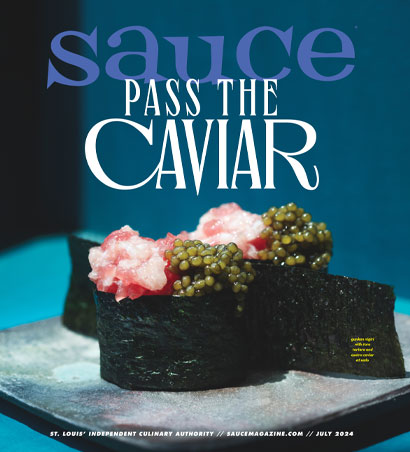Collinsville is The Horseradish Capital of the World
Each May, Collinsville, Illinois, just a short hop across the Mississippi River from St. Louis, plays host to the International Horseradish Festival. There are several games and events including a horseradish root toss, a horseradish-eating contest, and of course, a horseradish recipes contest. I will admit that although I remember hearing about the festival and learning that the area around Collinsville is big in growing horseradish, I have never been very interested in going to the festival. But, things change and sometimes in the course of change things become more interesting and clear. Believe it or not, the Collinsville area grows sixty percent of the world’s horseradish supply. The area around Collinsville is known as the American Bottoms, which is Mississippi River Basin area. The area is carved-out by ice age glaciers and the soil is rich in potash, which is a nutrient necessary for horseradish to thrive. In the 1800s, German immigrants in the area started growing horseradish and the practice has been handed down through generations. Although growing horseradish in this area didn’t begin until the 1800s, horseradish has been around for several centuries. As early as 1500 B.C. horseradish was appointed one of the “five bitter herbs” to be eaten by Jews during Passover. Early Greeks used horseradish for lower back pain and an aphrodisiac. Around 1600 A.D. horseradish consumption spread across Europe into Scandinavia and England where it was known as a cough expectorant and treatment for food poisoning, scurvy, tuberculosis and colic. By the late 1600s horseradish was a popular condiment for beef and seafood. In the mid 1600s a mixture of horseradish, wormwood and tansy called “horseradish ale” was created in England and Germany to revive weary travelers. It was also during this time that early American settlers introduced horseradish cultivation in the new colonies. Around 1850 was when German immigrants in the Midwest started cultivating horseradish. In addition to the Midwest, other prominent United States growing areas are Eau Claire, Wisconsin and the Tulelake region of Northern California. The name horseradish is believed to come from a variation of the German name for it, which is “meerrettich” meaning sea radish. The English were said to mispronounce the German word “meer” and began calling it “mareradish.” Eventually it was called horseradish. Horseradish is a hardy perennial member of the Cruciferae or mustard family. Cousins include the common radish, Brussels sprouts, kale and cauliflower. Although the leaves of the plant are edible, it is mostly cultivated for its thick, fleshy white roots. The roots are then harvested in the spring and fall and sold to processors who grate the root. The “heat” or ability to clear nasal passages that characterizes horseradish is generally absent in the root until it is ground or grated. When this happens, root cells are crushed, and volatile oils known as isothiocyanate are released. The ground horseradish is then mixed with vinegar to stabilize the “heat.” Horseradish and vinegar are typically the primary ingredients in prepared horseradish today, although they may also contain spices or other ingredients. In the United States, about 24 million pounds of horseradish roots are ground and processed each year to produce approximately 6 million gallons of prepared horseradish. Considering that most horseradish is still planted and harvested by hand, this seems like a monumental amount. Because one tablespoon of horseradish has only 2 calories, is low in sodium, and provides dietary fiber, the National Heart, Lung, and Blood Institute gave horseradish high marks as a low-fat, high flavor condiment along with salsa and mustard. These are convenient condiments to be added during preparation of foods or at the table as a topping. Some suggestions are substituting prepared horseradish for butter and salt as a vegetable topper. Mash potatoes with horseradish and low-fat sour cream, or add to scrambled eggs, hashbrowns or sausage. Although horseradish is most often used to accompany meat and seafood, it can give any dish a kick. Try adding a small amount to tomato juice or Bloody Marys, or add to meat stock for soups. For an easy appetizer, blend horseradish with softened cream cheese, spread on thin beef tenderloin and wrap around chilled asparagus spears. Pizza sauce seasoned with horseradish or deviled eggs seasoned with horseradish can give a new tangy twist to old favorites. When choosing fresh horseradish root at the supermarket, choose firm roots without any blemishes and avoid those that are sprouting or slightly green because they may be bitter. Peel the skin down to the flesh; peel only the amount necessary. Grate or shred in a food processor, using a hand grater can produce very strong fumes, causing burning and watering eyes. Grated fresh horseradish loses its pungency quickly, so prepare in small quantities. The color of processed horseradish varies from white to creamy beige and browns with aging. Always serve in a glass or ceramic bowl as horseradish tarnishes silver. Store in a tightly covered jar in the refrigerator. Horseradish root can also be frozen. I’ve found some great recipes that include horseradish. You can also experiment on your own adding horseradish to most anything, with tasty results. Need something quick and easy for the upcoming Super Bowl party? I’ve included some easy dishes and appetizers to take along that everyone will love.Most Recent
Drink this savory martini at The Lucky Accomplice in St. Louis
The Lucky Accomplice’s bar manager Corey Moszer is thinking outside the box …





